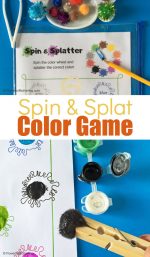This post may contain affiliate links. If you use these links to buy something we earn a commission at no extra cost to you. Powerful Mothering is supported by its audience, thankyou!
Read below for a variety of tips for improving handwriting in children.
Handwriting can be a problem for people of all ages. Chances are, you know someone who doesn’t have the best handwriting, or maybe you are that someone. While adults can work on improving their handwriting on their own, many children need a little bit of extra guidance.
Even in this day and age, when a whole host of things are done digitally, handwriting is still an important skill to have.
So why not help the kids improve their handwriting skills before they start to be a problem? This way, they have a good grasp on those skills before adulthood.

Tips for Improving Handwriting in Children
As I mentioned above, it’s important to help kids improve their handwriting when they’re young. So these tips for improving handwriting are focused on preventing and helping the kids before serious handwriting issues develop.
Fine Motor Development is a Must
Before children even pick up a pencil, it’s imperative that they’ve worked on their fine motor skills.
When we talk about fine motor skills in children, we’re talking about the the movements of small muscles in the hands, fingers, and wrists. It’s related to hand-eye coordination, too, as well as hand and finger strength.
Kids can work on hand strengthening and fine motor skills in a wide variety of ways. Here are just a few suggestions to get you started:
- Play with play dough. Manipulating play dough improves hand and finger strength. Those fine motor skills get a workout when kids make snakes with the dough or roll tiny balls to count or play with (among many other things).
- Build with LEGO bricks. Using the regular-sized LEGO blocks takes a lot of fine motor skills, and it’s such a fun way for kids to strengthen those skills.
- Craft with beads. Stringing beads helps the kids with hand-eye coordination, concentration, and it’s a wonderful way for little fingers to move and improve.
- Fine motor games and activities can also help children learning more about colors, shapes, letters, and numbers. It’s something you can add into many of the daily activities you do around the house, as well as games you and the kids play.
Keep in mind, fine motor development doesn’t need to stop once children are writing. Using their fingers in other non-writing activities will just continue to help with handwriting.
Work on Pre-Writing Skills
I know we’re talking about tips for improving handwriting before it gets out of hand, but pre-writing skills are needed to do just that.
Pre-writing skills focus on making lines and shapes of all kinds before children are taught how to write. This allows kids to become familiar with making marks, what different shapes look like, how to use their hands to make those shapes, etc.
Here are some ideas for working on pre-writing skills with the kids:
- Let kids explore art. Using different mediums (paint, crayons, etc.) to make their own mark gives children the chance to move their hands in many ways. It also shows them how to move their bodies to make the shapes that they want. Free exploration of art can have a big impact on early literacy by setting this foundation.
- Set some simple shape challenges. Sit with the kids and play an easy game of pre-writing “monkey see, monkey do”. Draw a shape or a line on your own paper, and then challenge the kids to make their own version.
- Break out the sensory writing trays. These can be as simple or as elaborate as you want to make them. Place a favorite sensory material in a shallow tray or bin. Show the kids some basic lines, shapes, or patterns, and have them make those patterns in the sensory material. Take this Arctic sensory tray for example – it just uses salt as the base, along with some hand-drawn pattern cards as inspiration.
Just like fine motor skills, pre-writing activities don’t have to stop once the kids are writing. Chances are, the children will still love making designs and patterns in a sensory tray. They just might add some words and letters to the experience once they’re in full writing mode.

Pencil Grasp Tips for Improving Handwriting
Pencil grasp develops over time. So you can’t expect a toddler to hold a crayon the same way a six-year old holds a pencil. Give the kids a lot of chances to draw, scribble, and write on their own. Many children are going to develop an appropriate pencil grasp on their own, through practice and mimicking adults.
That being said, there are also some times that kids need help with things. Here are a couple of ways to help children with the correct grasp:
- Have the child hold something small, like a bunched up tissue or a pompom, in their dominant hand. Then hand them a pencil (or other writing tool). This will (in most cases) result in the child using their pinkie and ring finger to hold the tissue/pompom, causing them to use a tripod grasp to hold the pencil.
- Use short crayons and pencils. Broken crayons and golf pencils are perfect for this. There’s less room on the writing implement for the kids to worry about.
Use Vertical Surfaces
This might not have even crossed your mind when it comes to handwriting, but vertical surfaces can have a big impact.
Here are some ideas for incorporating vertical surfaces at home or in the classroom:
- Use that easel! Easels are inherently vertical surfaces. Even better, the kids are already familiar with easels. Painting, drawing, and writing on the easel is perfect for helping improve handwriting.
- Hang a white board on the wall. White boards and chalkboards are just plain fun to write on. Place it on the wall, and you have an instant vertical surface for the kids to use.
- Tape paper on the wall. If you don’t have the room for a white board or chalkboard to live on the wall, this is a great temporary fix.
Posture Plays a Part
One last item that will help kids improve their handwriting involves posture. Yes, posture. If a child isn’t able to sit up correctly when they’re writing, it can have an impact on what they’re doing.
Using their back muscles and their core helps kids with kid posture and handwriting. Here are some ideas to help improve all of those things:
- Have the kids kneel or stand while they’re writing, or doing any other seated activity. This will make it a lot harder to slouch or bend. It will give the kids a chance to engage their core, their back muscles, and work on their posture.
- Gross motor play will help. Running, jumping, climbing, and all kinds of big movements will help the kids improve their core and their muscle strength. Which, in turn, will help with posture and handwriting skills.
Did you realize so much goes into handwriting?! I have to admit, I find it so fascinating to know how much our brains and bodies work together on things. Do you have any tips for improving handwriting that you’d like to share? Feel free to leave your ideas in the comments below.
Mary Catherine is a mother, an early childhood educator, and the force behind Fun-A-Day. She’s passionate about keeping early learning fun, meaningful, and developmentally appropriate.









Leave a Reply